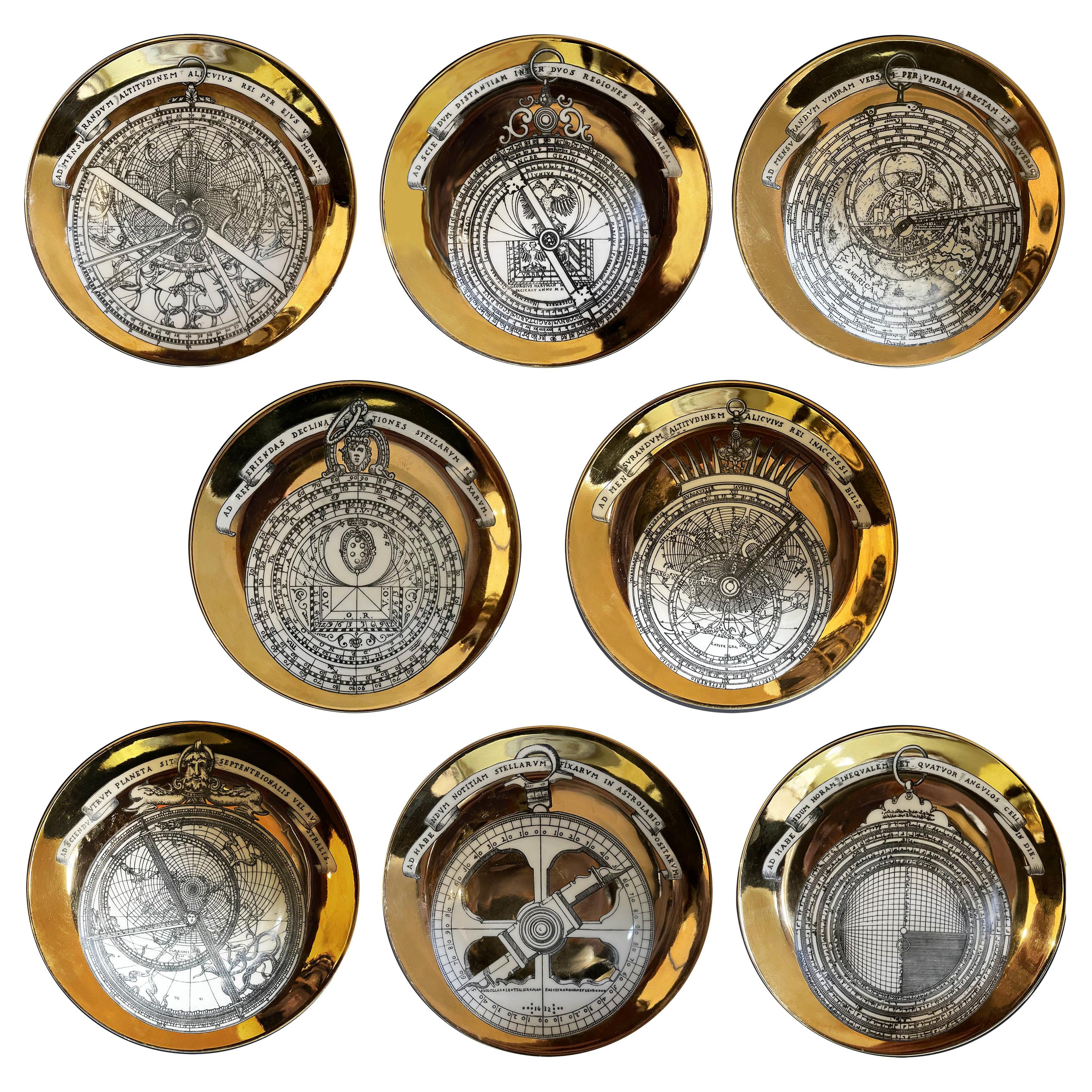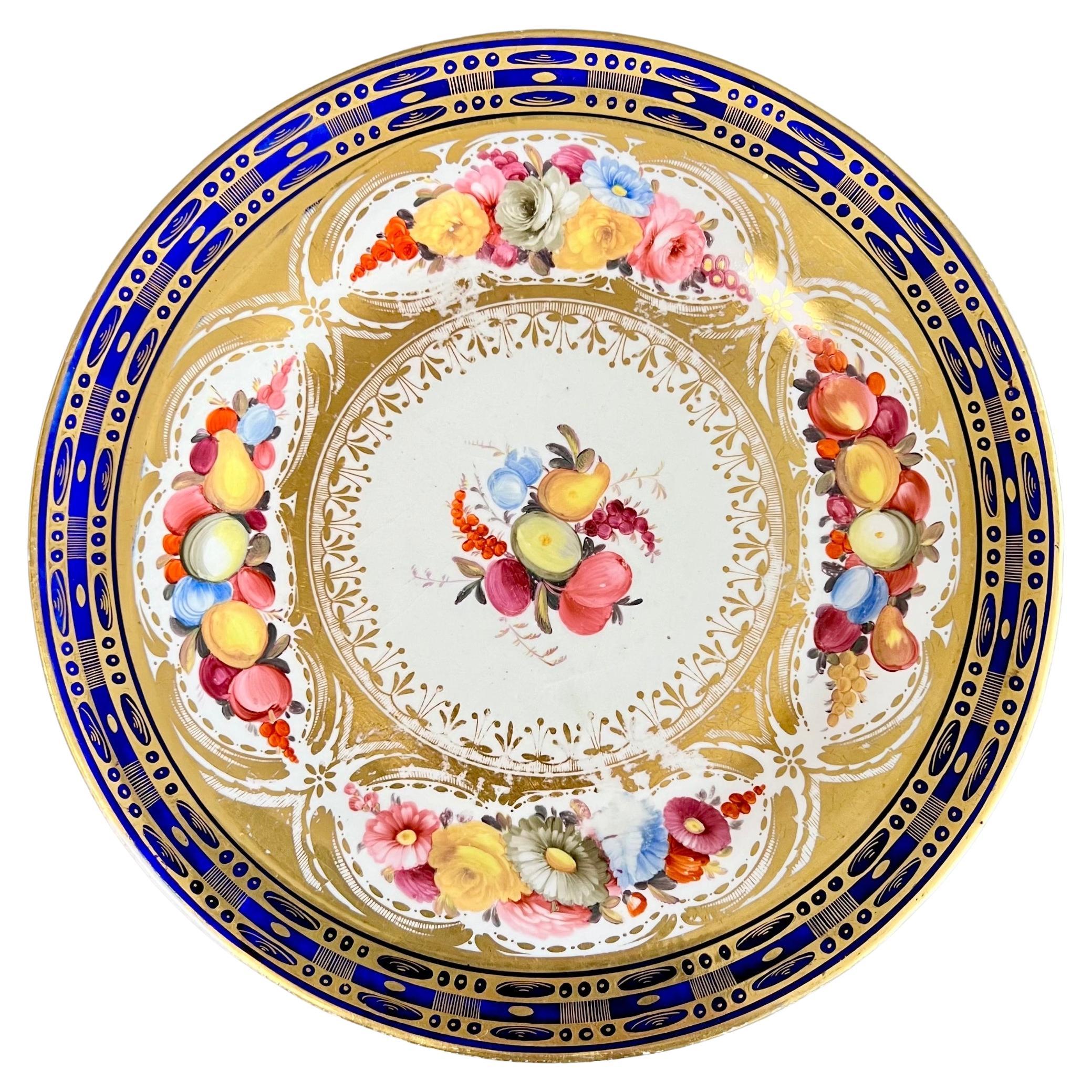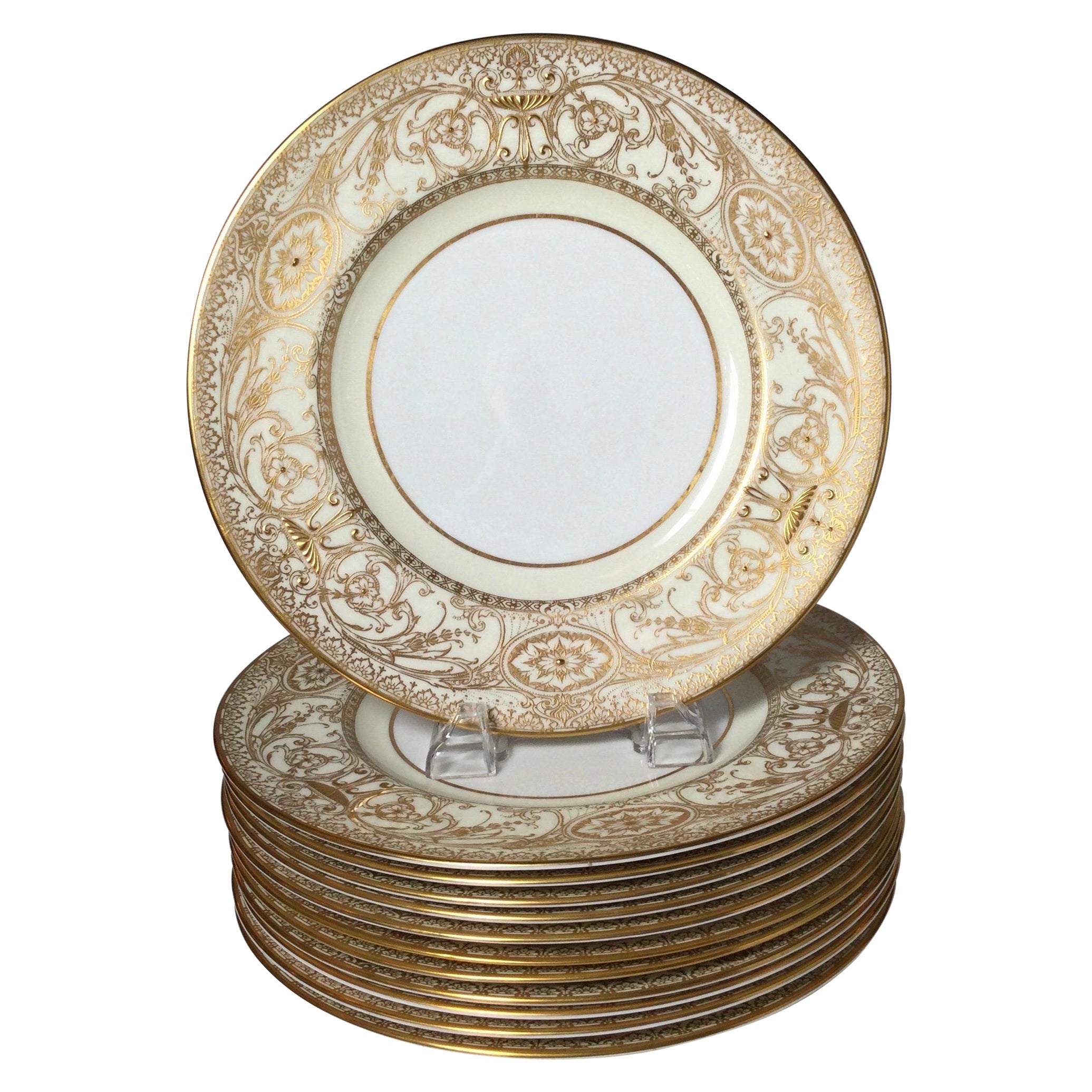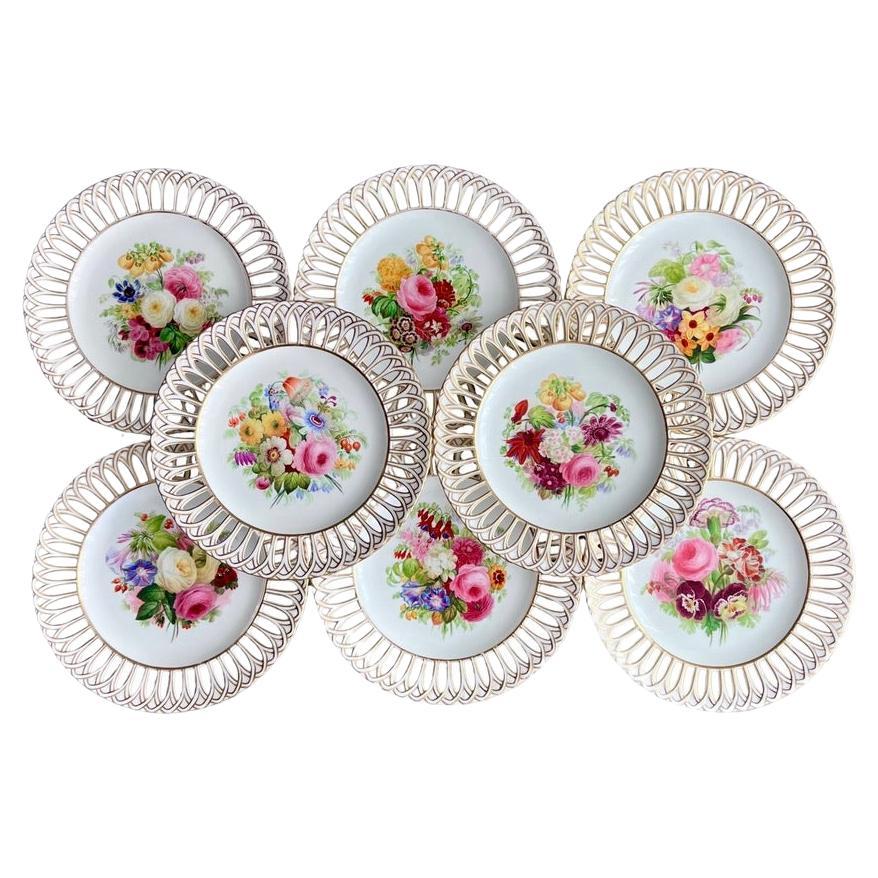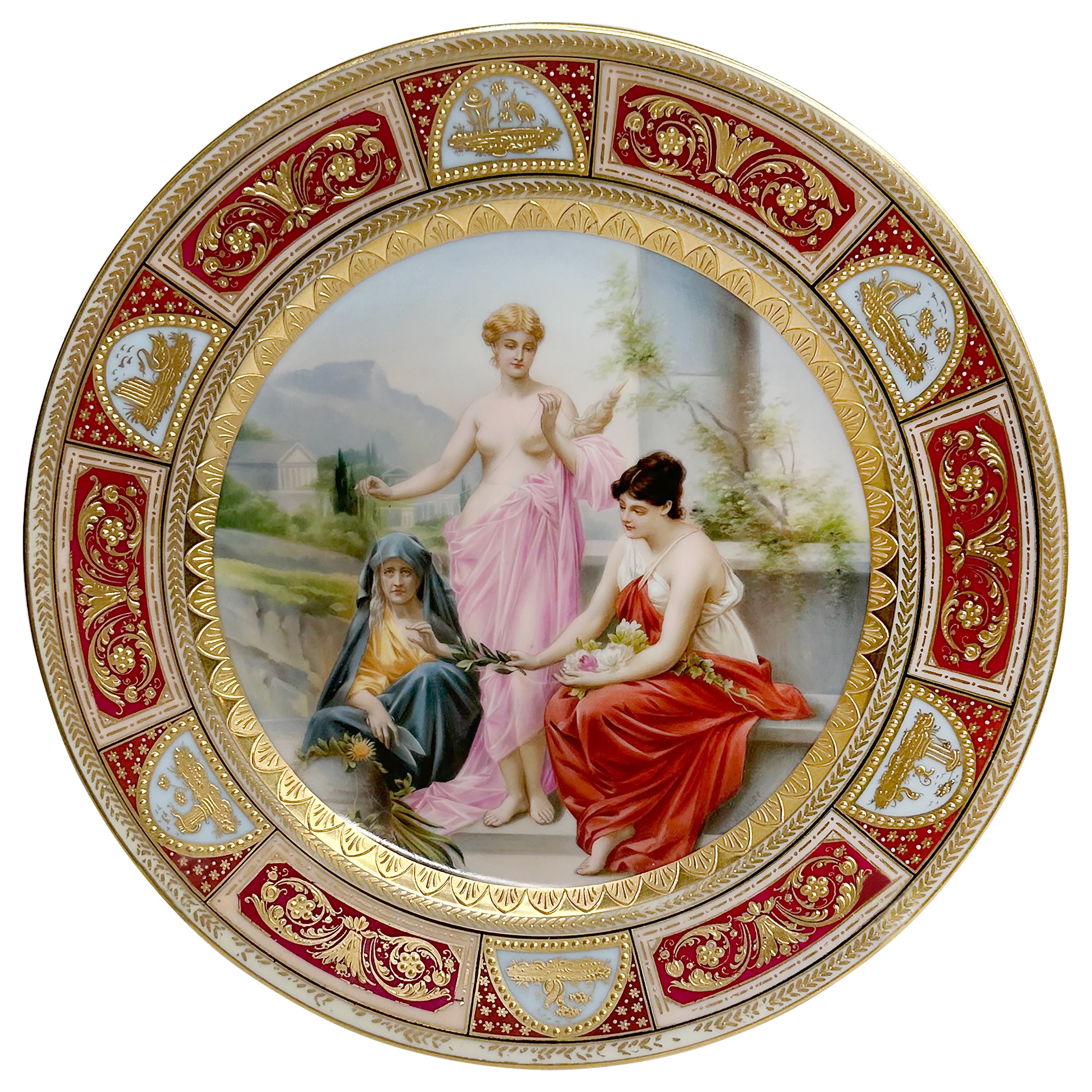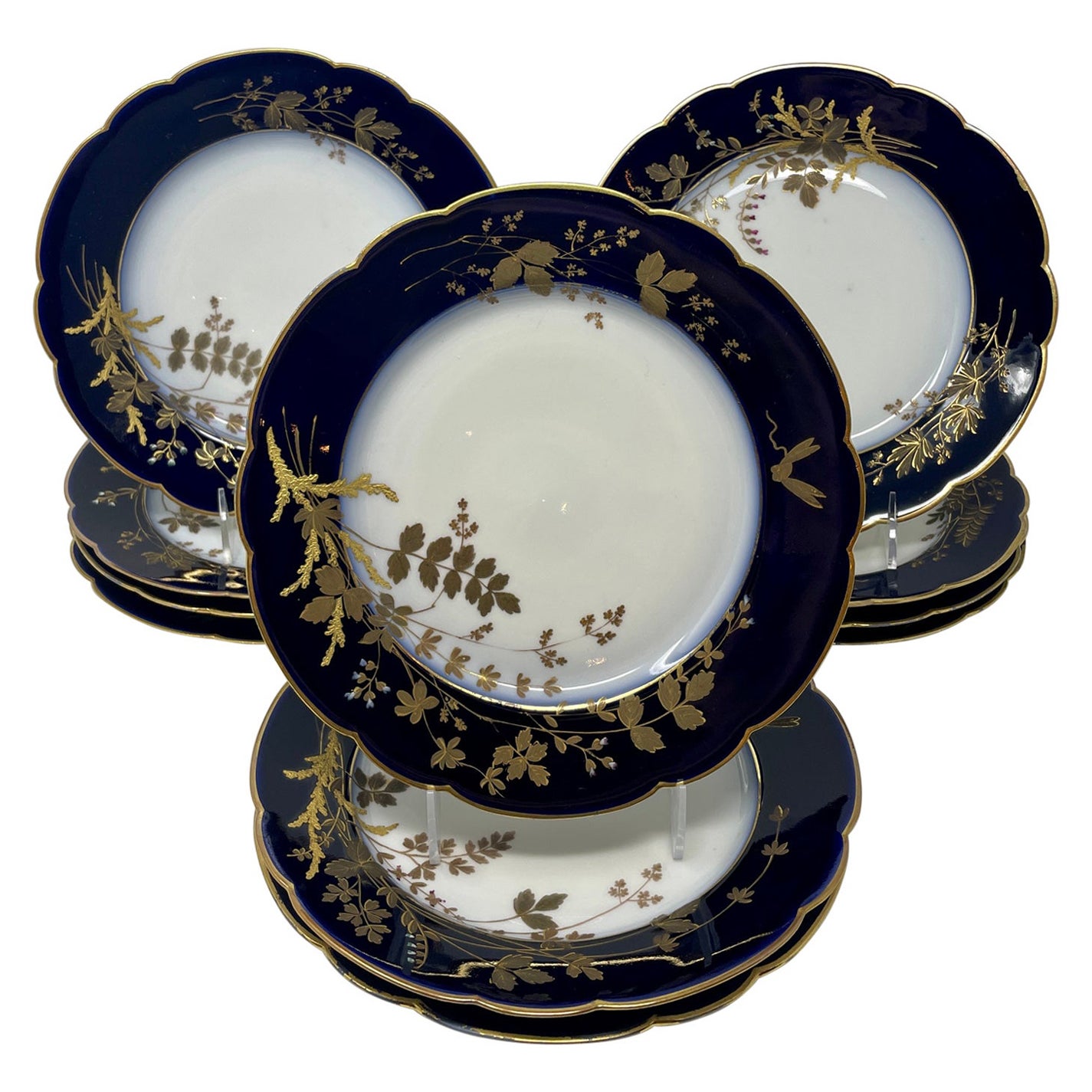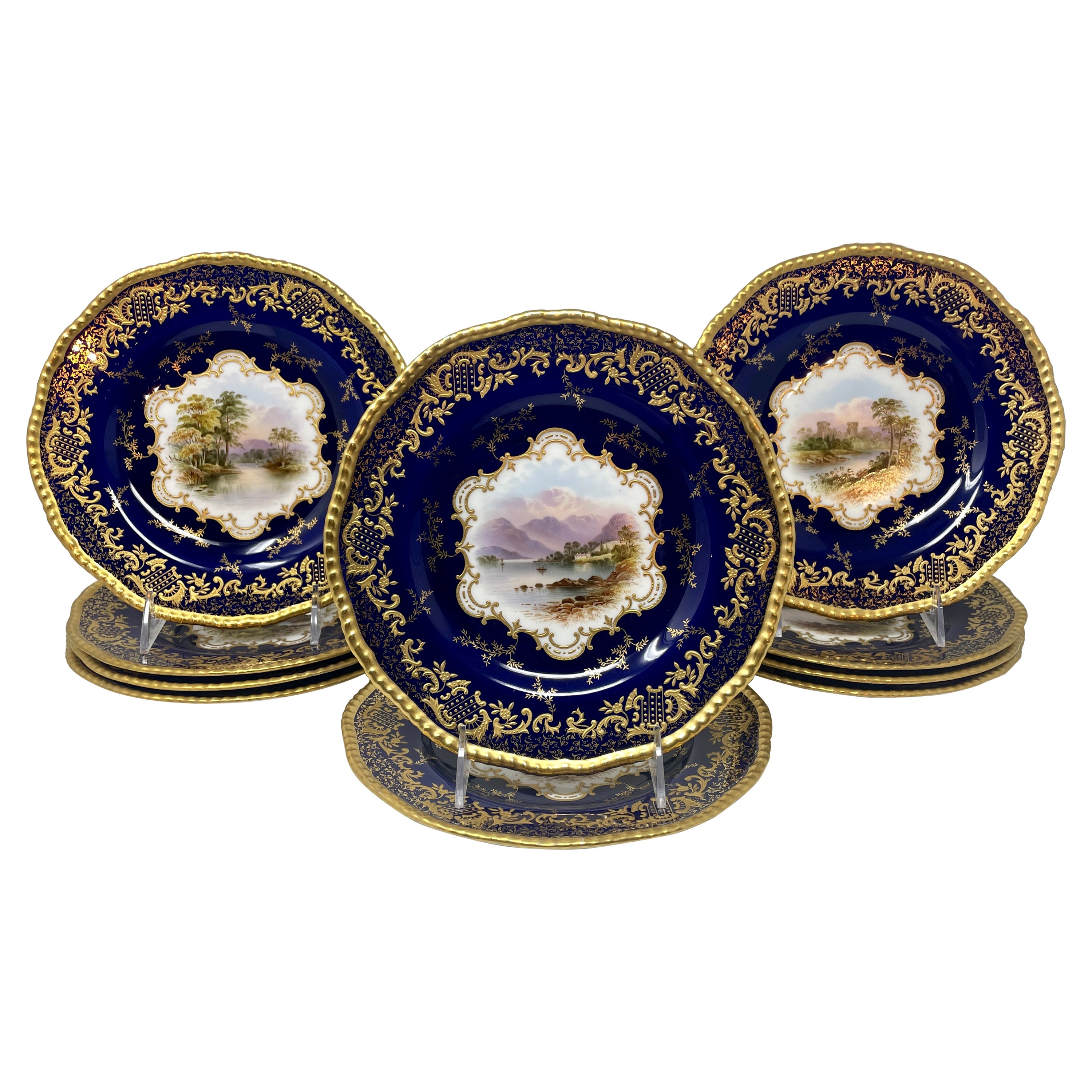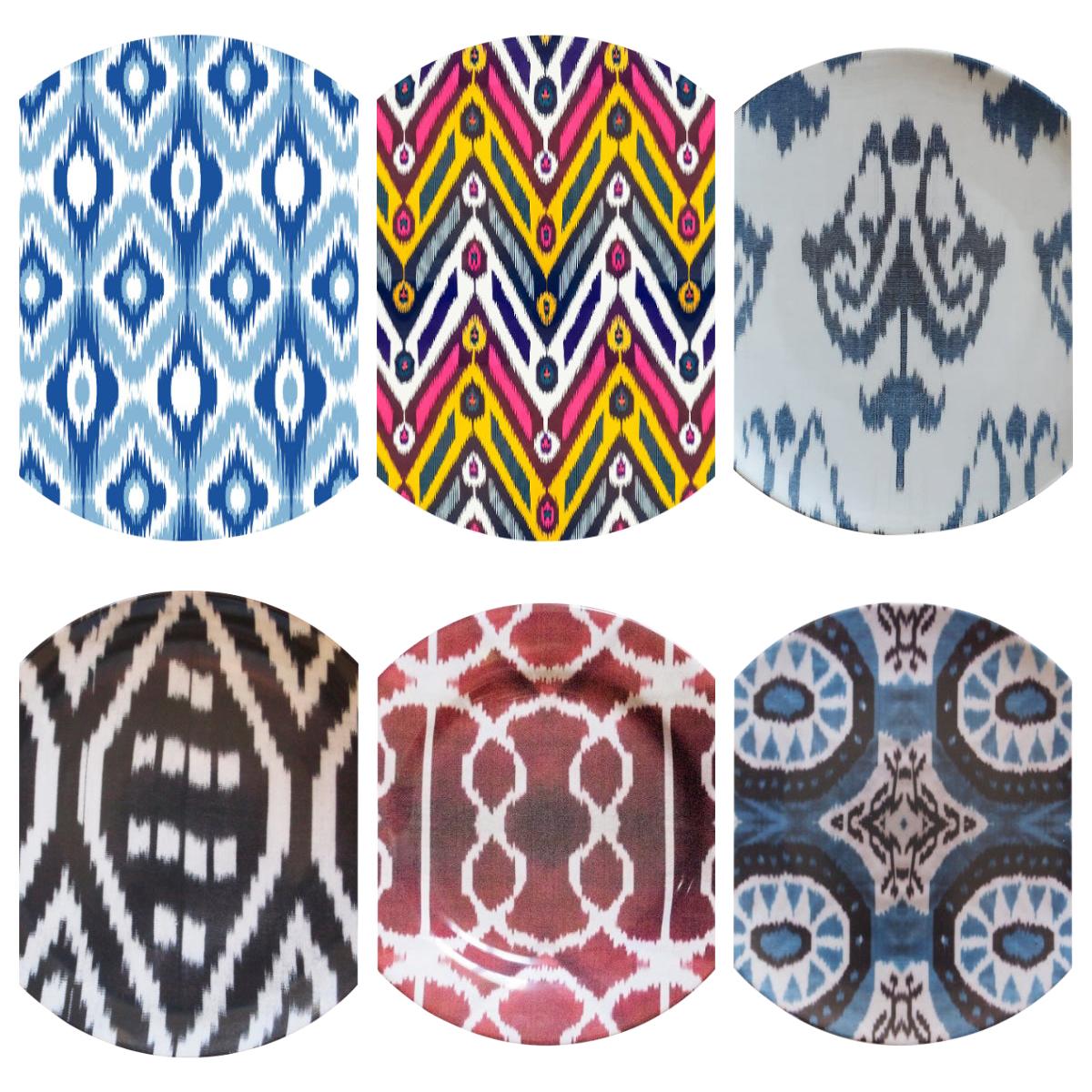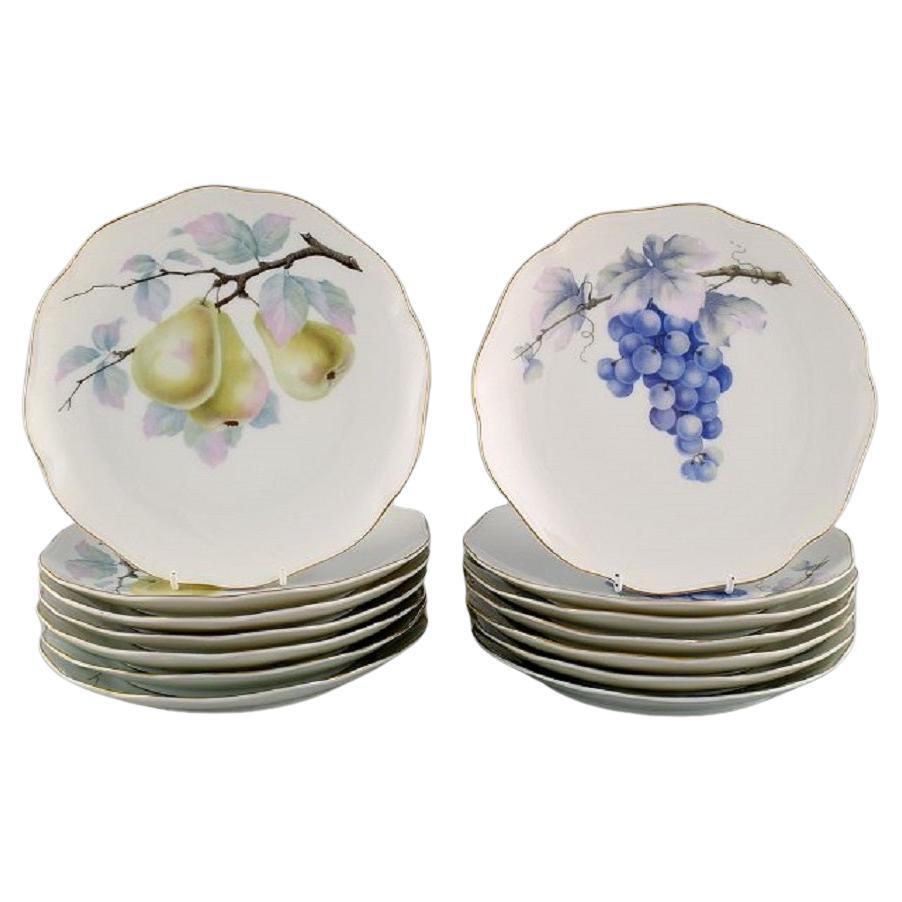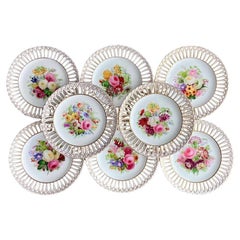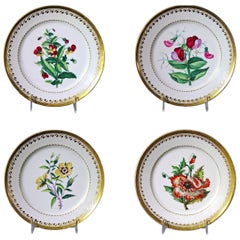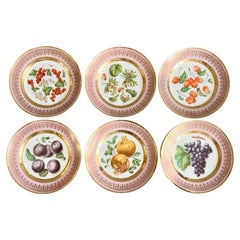
Vieux Paris Porcelain Set of 6 Plates, Mauve, Gilt and Sublime Fruits, ca 1865
View Similar Items
Video Loading
Want more images or videos?
Request additional images or videos from the seller
1 of 17
Vieux Paris Porcelain Set of 6 Plates, Mauve, Gilt and Sublime Fruits, ca 1865
About the Item
- Creator:Old Paris (Maker)
- Dimensions:Height: 1 in (2.54 cm)Diameter: 8.75 in (22.23 cm)
- Sold As:Set of 6
- Style:Empire (In the Style Of)
- Materials and Techniques:
- Place of Origin:
- Period:
- Date of Manufacture:ca 1865
- Condition:Wear consistent with age and use. In excellent condition without any damage, repairs or crazing, and just some rubbing, as visible in the pictures.
- Seller Location:London, GB
- Reference Number:Seller: LT-PAR031stDibs: LU4805137759262
About the Seller
5.0
Gold Seller
These expertly vetted sellers are highly rated and consistently exceed customer expectations.
Established in 2016
1stDibs seller since 2019
210 sales on 1stDibs
Typical response time: 1 hour
More From This SellerView All
- Coalport John Rose Porcelain Plate, Cobalt Blue, Gilt, Flowers & Fruits, 1805-15By Coalport Porcelain, John RoseLocated in London, GBThis is a stunning plate made by John Rose at Coalport between 1805 and 1815. The plate is decorated in underglaze cobalt blue and has beautifully hand painted flowers and fruits, an...Category
Antique 1810s English Regency Dinner Plates
MaterialsPorcelain
- Copeland Set of 8 plates, Reticulated, Sublime Flowers by Greatbatch, 1848By CopelandLocated in London, GBThis is a stunning set of 8 reticulated plates made by Copeland in 1848. Each plate is decorated with a unique sublimely painted flower arrangement by the artist Greatbatch. We have a second set of 8 of these plates available, as well as a few separate ones; please see separate listings. The Copeland factory was the third iteration of the famous Spode factory, after the "Copeland & Garrett" period which transitioned into the "Copeland" period in about 1833. The Spode/Copeland factory was one of the most prominent potteries right from the start of English porcelain production in the late 1700s to the demise of the industry in the 1960s and ultimate closure in the early 21st Century. In fact it was the founder Josiah Spode who was responsible for the recipe for bone china that made English china production so successful in the two centuries to come. Throughout all the changes, their items have always remained of exceptionally high quality and many of the designs have become iconic. These plates were potted in fine white bone china, the rims meticulously reticulated in the "Gothic" shape. Reticulation was very time consuming and difficult, and just this detail would have made these plates expensive. The sublimely painted flower arrangements in the centre were done by Greatbatch, one of the well-known floral artists working for Copeland. Greatbatch was active between 1845 and 1860, and worked together with his brother R. Greatbatch, who was a talented gilder. They exhibited at the Great Exhibition of 1851. These plates would have belonged to a sublimely expensive dessert service. They are all stamped with the small blue Copeland mark with interlocking C's, and painted in red with the pattern number 7913, dating it at the year 1848. Documentation: A plate of this service is shown on page 80 of Steven Smith's "Spode & Copeland: Over Two Hundred Years of Fine China and Porcelain...Category
Antique 1840s English Victorian Dinner Plates
MaterialsPorcelain
- Set of 8 Plates by Copeland, Reticulated, Sublime Flowers by Greatbatch, 1848By CopelandLocated in London, GBThis is a stunning set of 8 reticulated plates made by Copeland in 1848. Each plate is decorated with a unique sublimely painted flower arrangement by the artist Greatbatch. We have a second set of 8 of these plates available, as well as a few separate ones; please see separate listings. The Copeland factory was the third iteration of the famous Spode factory, after the "Copeland & Garrett" period which transitioned into the "Copeland" period in about 1833. The Spode/Copeland factory was one of the most prominent potteries right from the start of English porcelain production in the late 1700s to the demise of the industry in the 1960s and ultimate closure in the early 21st Century. In fact it was the founder Josiah Spode who was responsible for the recipe for bone china that made English china production so successful in the two centuries to come. Throughout all the changes, their items have always remained of exceptionally high quality and many of the designs have become iconic. These plates were potted in fine white bone china, the rims meticulously reticulated in the "Gothic" shape. Reticulation was very time consuming and difficult, and just this detail would have made these plates expensive. The sublimely painted flower arrangements in the centre were done by Greatbatch, one of the well-known floral artists working for Copeland. Greatbatch was active between 1845 and 1860, and worked together with his brother R. Greatbatch, who was a talented gilder. They exhibited at the Great Exhibition of 1851. These plates would have belonged to a sublimely expensive dessert service. They are all stamped with the small blue Copeland mark with interlocking C's, and painted in red with the pattern number 7913, dating it at the year 1848. Documentation: A plate of this service is shown on page 80 of Steven Smith's "Spode & Copeland: Over Two Hundred Years of Fine China and Porcelain...Category
Antique 1840s English Victorian Dinner Plates
MaterialsPorcelain
$7,500 / setFree Shipping - Worcester Porcelain Deep Plate, Aesop Fable Horse and Donkey, ca 1780By 1st Period Worcester Dr. WallLocated in London, GBThis is a very rare deep plate made by Worcester around 1780. The plate has a basket weave rim and a very charming image of the Aesop fable of the horse and the donkey in the centre....Category
Antique 1780s English George III Porcelain
MaterialsPorcelain
- Samuel Alcock Set of 4 Plates, Pastel Colours, Birds and Flowers, ca 1857By Samuel Alcock & Co.Located in London, GBA set of four pierced dessert plates, 3 in the “Staffordshire” shape, in harlequin pastel colours with gilt, three with named birds and one with a flower Patterns 3/9414, 3/9772 and...Category
Antique 1850s English Victorian Dinner Plates
MaterialsPorcelain
- Spode Felspar Porcelain Plate, Landscape Painting, Regency ca 1822By SpodeLocated in London, GBThis is a dessert plate made by Spode in about 1822, which was the Regency era. The plate is made of Felspar porcelain and decorated with a beautiful hand painted landscape scene. The plate would have belonged to a large dessert service of which each piece had a unique landscape; in fact I sold a dessert service in this pattern a while ago. Spode was the great pioneer among the Georgian potters in England. Around the year 1800 he perfected the bone china recipe that has been used by British potters ever since, and he was also the leading potter behind the technique of transferware, making it possible for English potters to replace the Chinese export china...Category
Antique 1820s English Regency Porcelain
MaterialsPorcelain
You May Also LikeView All
- Antique Paris Porcelain Botanical Set of Plates, Flamen-FleuryBy Old ParisLocated in Downingtown, PAAntique Paris Porcelain set of Botanical plates, Flamen-Fleury Factory, circa 1830-1835 The set of four Paris porcelain circular plates from Fl...Category
Antique 1830s French Regency Dinner Plates
MaterialsPorcelain
- Piero Fornasetti Porcelain Set of 8 Gilted Astrolabe PlatesBy Piero FornasettiLocated in Paris, FRPiero Fornasetti 1913-1988 lived and worked in Milano and he was very fond of science. This series normally is composed of 12 designs about astrolabe or "Astrolabos" in Greece which ...Category
Vintage 1960s Italian Dinner Plates
MaterialsPorcelain
- Set of 12 English Raised Gilt Porcelain Dinner Service PlatesBy Royal WorcesterLocated in Lambertville, NJA regal set of 12 elaborately gild service plates, by Royal Worcester. The set with delicate broad gilt borders with a white porcelain background. The mark on the back from 1950.Category
Vintage 1950s American Dinner Plates
MaterialsPorcelain
- Hand Painted and Gilt Porcelain Cabinet PlateLocated in Dallas, TXA beautifully hand painted and gilt porcelain cabinet plate. This is a reproduction of a depiction of Die Parzen (The Three Fates). Of the Imperial Viennese period. Likely made in Germany per the marking on the back. Acrylic stand not included. The Three Fates is a Greek mythological story. In the story of Homer and the Fates...Category
Antique 19th Century Porcelain
MaterialsGold
- Set of 10 Antique French Limoges Porcelain Cobalt & Gold Dinner Plates, Ca. 1900Located in New Orleans, LAAntique French "Charles Field Haviland" limoges porcelain dinner plates, Circa 1890-1910. Cobalt blue and ivory background with pretty gold-leaf vining leaves, trailing flowers, bee...Category
Antique Late 19th Century French Dinner Plates
MaterialsPorcelain
- Set of 10 Antique English Cobalt Blue & Gold Coalport Porcelain Plates, ca 1900Located in New Orleans, LASet of 10 antique English cobalt blue and gold coalport porcelain plates, circa 1900. Each plate features unique center design.Category
Early 20th Century English Dinner Plates
MaterialsPorcelain
Recently Viewed
View AllMore Ways To Browse
Old Antique Kitchens
Old Silver Items
Old Paris Plates
Vintage Painted Plates
I Antique On Line
Vintage Plate England
19th Century Chinese Plates
Set Chinese Plates
Hand Painted China Plates
Plate Set China
Antique Porcelain Small Plates
Finger Plates
Vintage Porcelain Plates
Antique Hand Painted China Plates
Vintage Dinner Sets
Old Chinese Porcelain
Set Of Hand Painted Small Plates
19th Century Chinese Porcelain Plates

